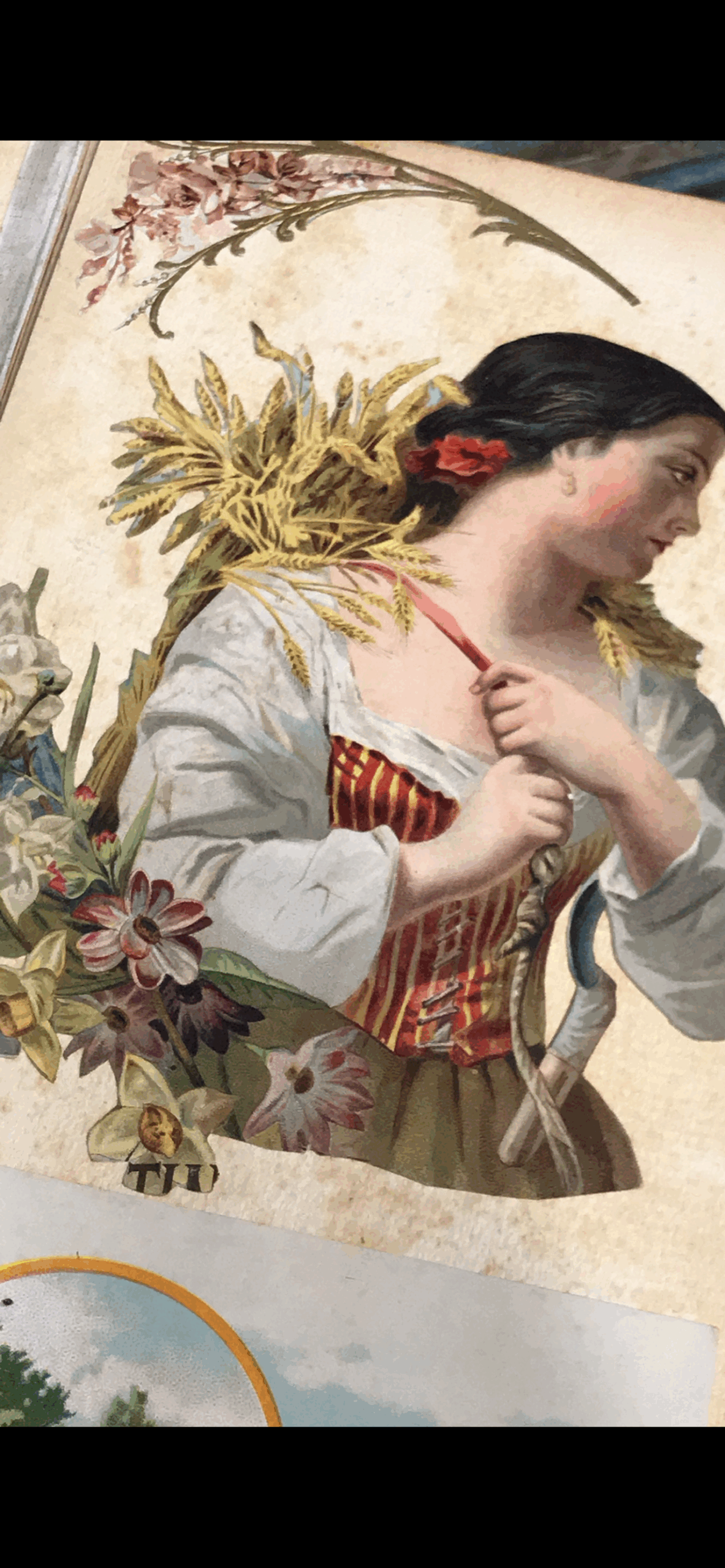
We have always had a way of honoring the little things. That tiny chocolate paper? It could be part of a schoolchild’s collection, a young girl’s diary, or a grandmother’s recipe notebook, pressed next to a hand-written ingredient list for gâteau au chocolat.
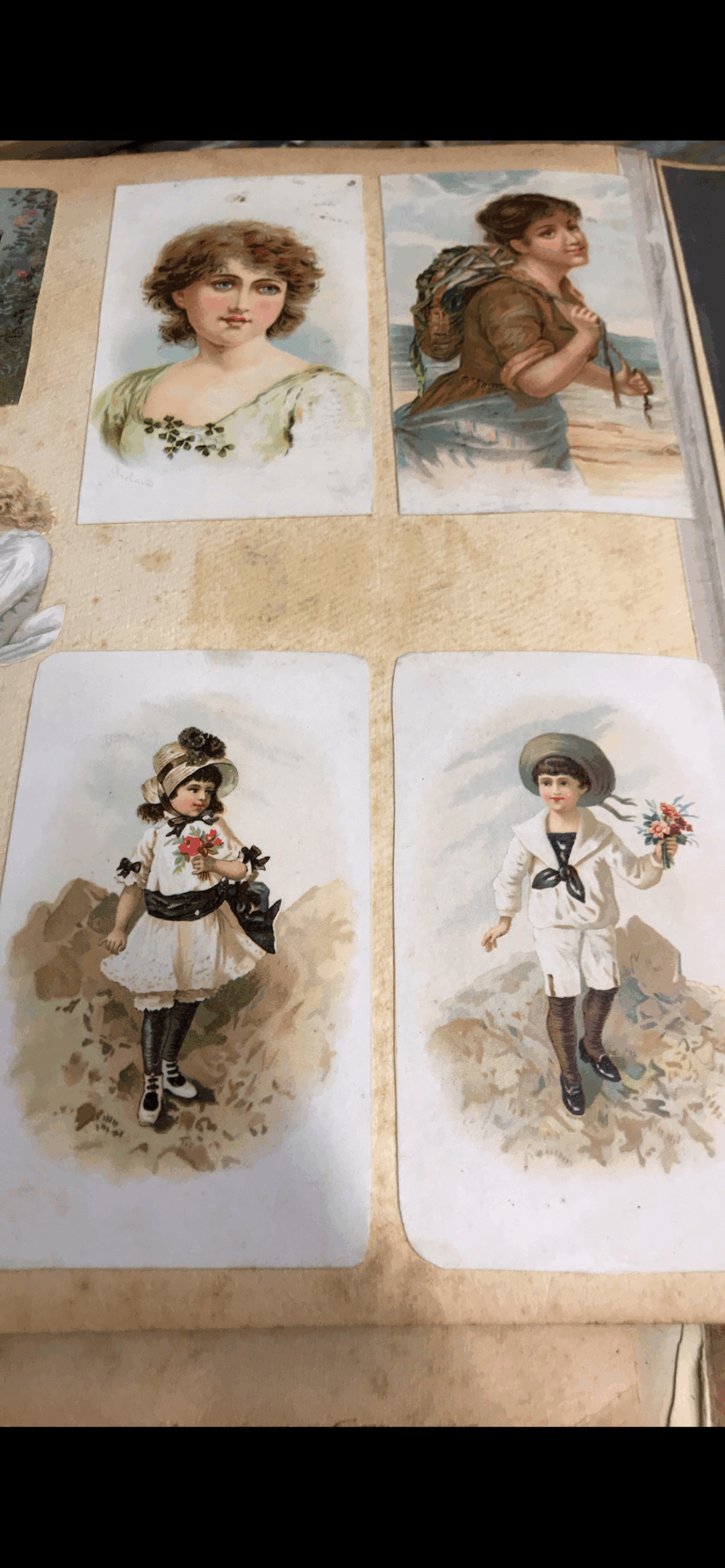
At the brocante I find poetry in the everyday. A torn ticket stub, an envelope with beautiful handwriting, a label from a jar of jam—these scraps told stories. They still do. And there’s something so tender about that. A kind of quiet resistance to letting the ordinary go unnoticed.
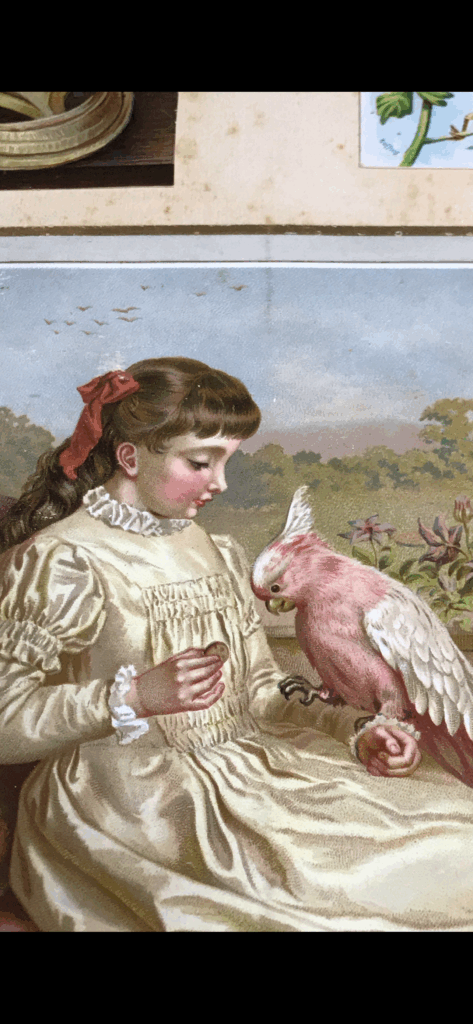
Imagine this: A child in a sunlit kitchen unwraps a square of chocolate. Inside, along with the sweet, there’s a tiny slip of printed paper—sometimes with a quote, or a little illustration, or even a miniature collectible card. These weren’t tossed away. They were kept. Slipped into a wooden drawer, pinned to a corner of a mirror, or carefully glued into a scrapbook
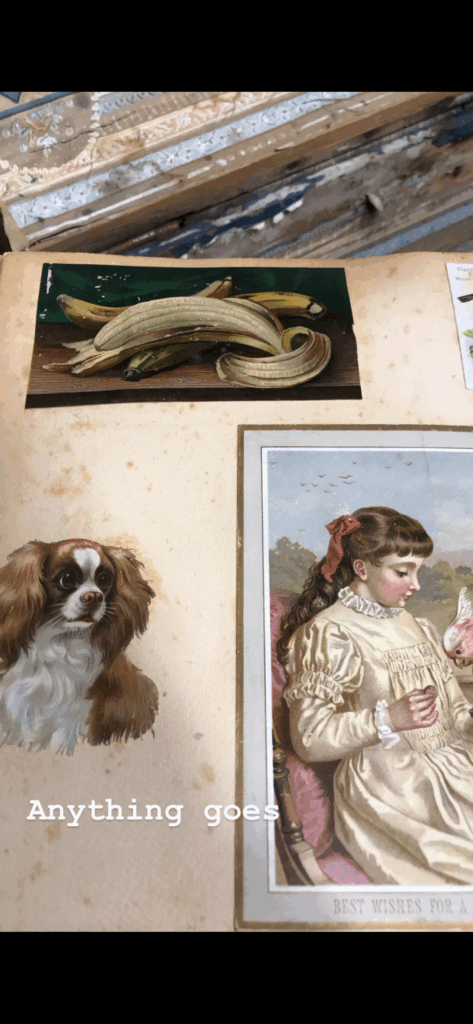
Chromo is short for chromolithographie, a printing process that was especially popular in the 19th and early 20th centuries in France. It allowed for colorful, richly detailed images to be printed affordably and in large quantities. These printed images were often used as decorative scraps, advertisements, collectible cards, and educational tools. In essence, they were early color prints before full-color photography became common.
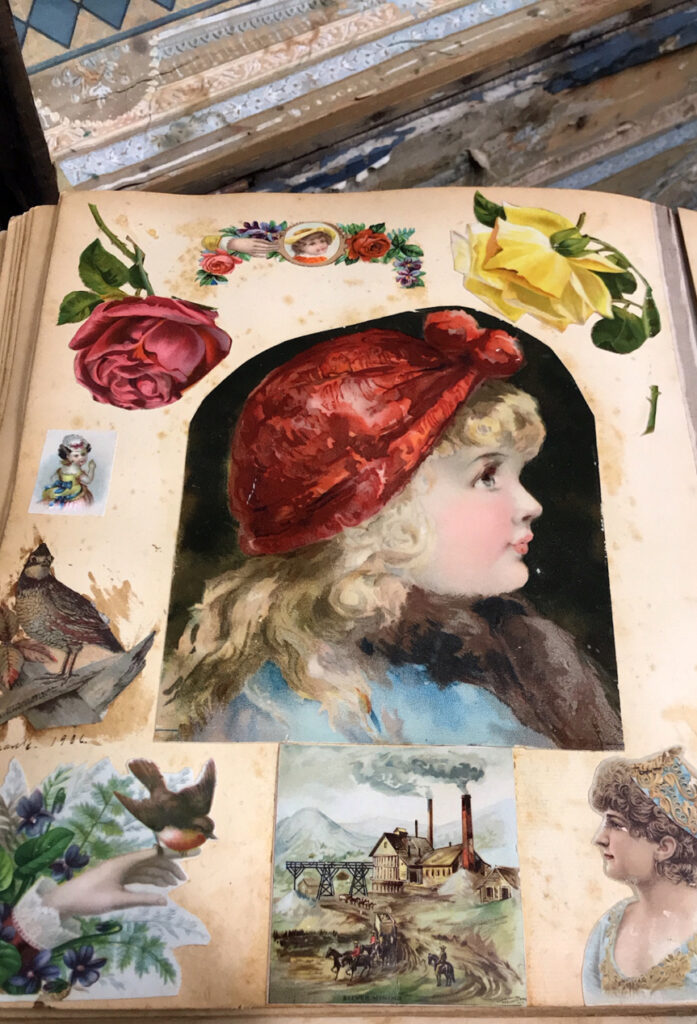
They were printed on thin paper or cardstock—often with a slightly glossy finish—and cut into small, usable shapes.
Tiny bursts of color.
French. Old. Too pretty to throw away.

Little girls with ribbons.
Saints with halos.
Birds mid-flight.
Bouquets that never wilted.
Farmers, milkmaids.
Tiny hands, rosy cheeks.
Angels. Always angels.
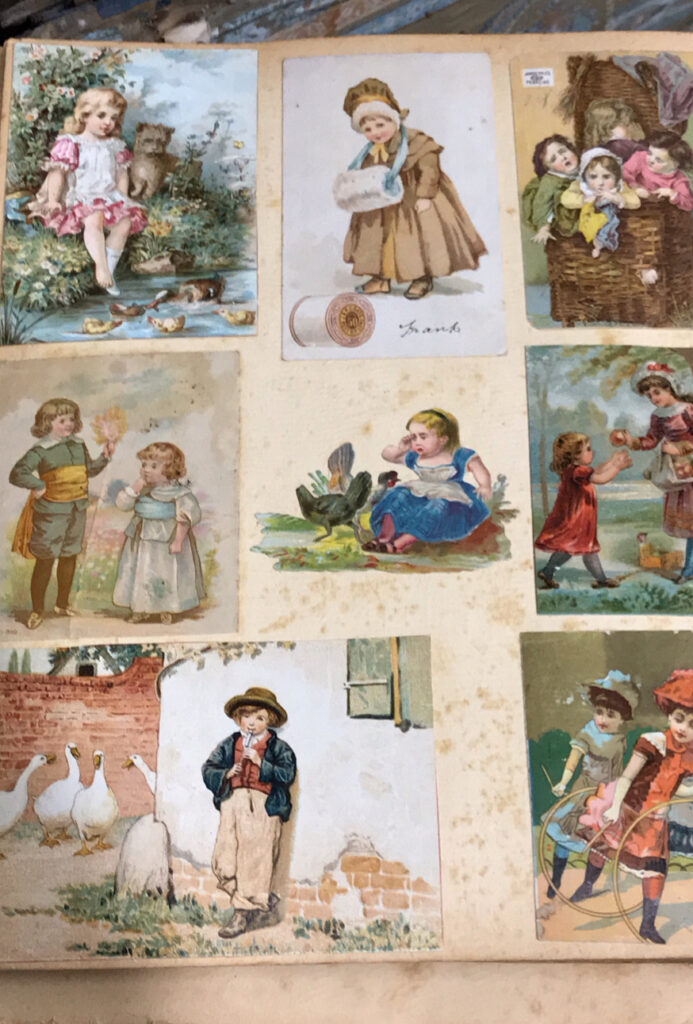
Collectible.
Tradeable.
Lovable.
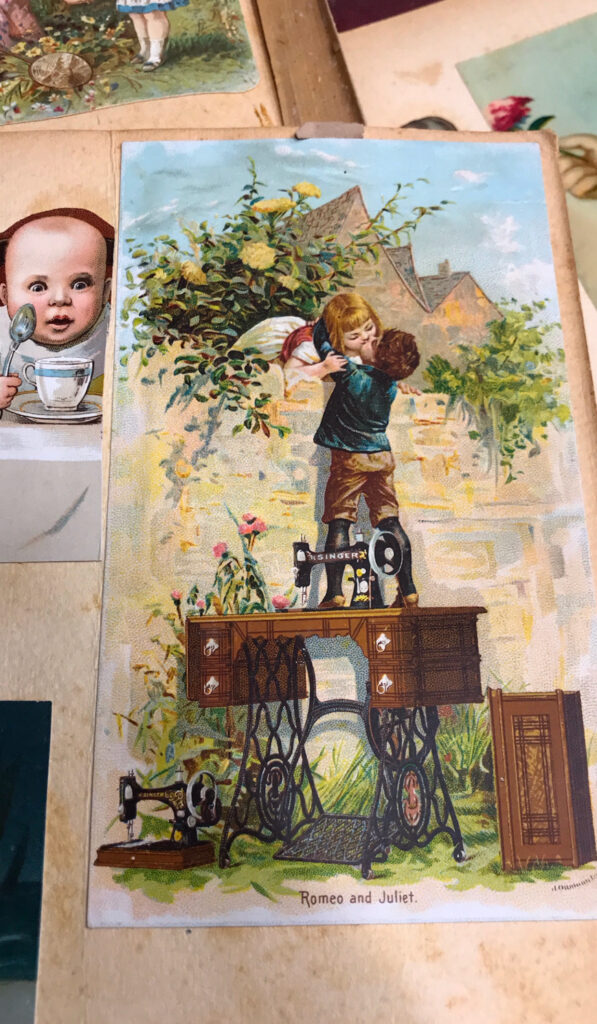
Inside chocolate wrappers.
Folded into biscuit tins.
Pressed between the pages of old schoolbooks.
Slipped into Sunday shoes after mass.
Given by shopkeepers, just for being polite.
Just for being small.
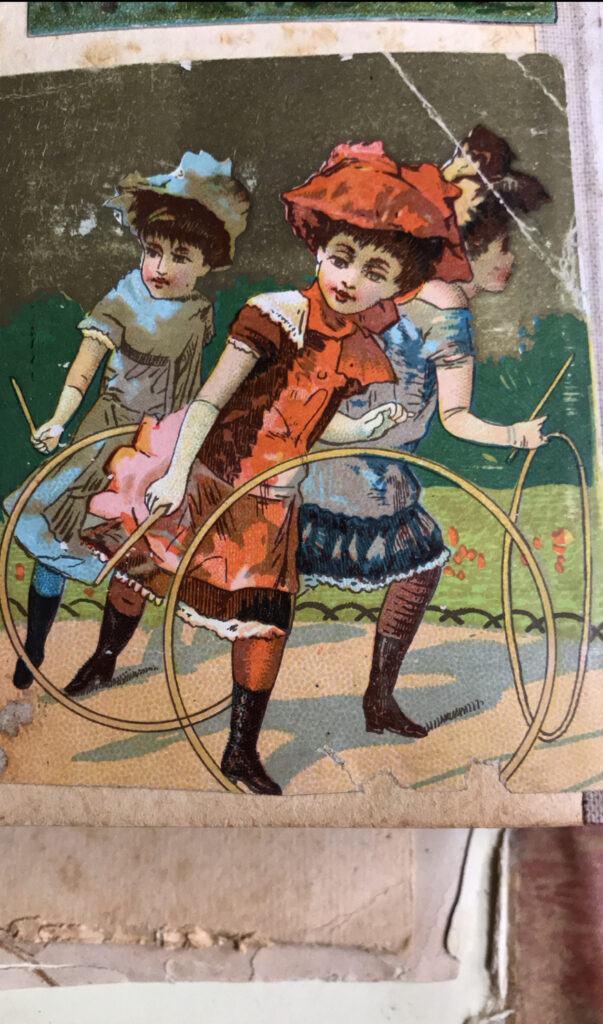
At the bottom of sewing baskets.
Between lace handkerchiefs.
Hidden in kitchen drawers next to string and thimbles.
They came with tea. With soap.
With wine. With cough syrup.
A reward. A gift. A marketing trick turned treasure. Put into a scrapbook.
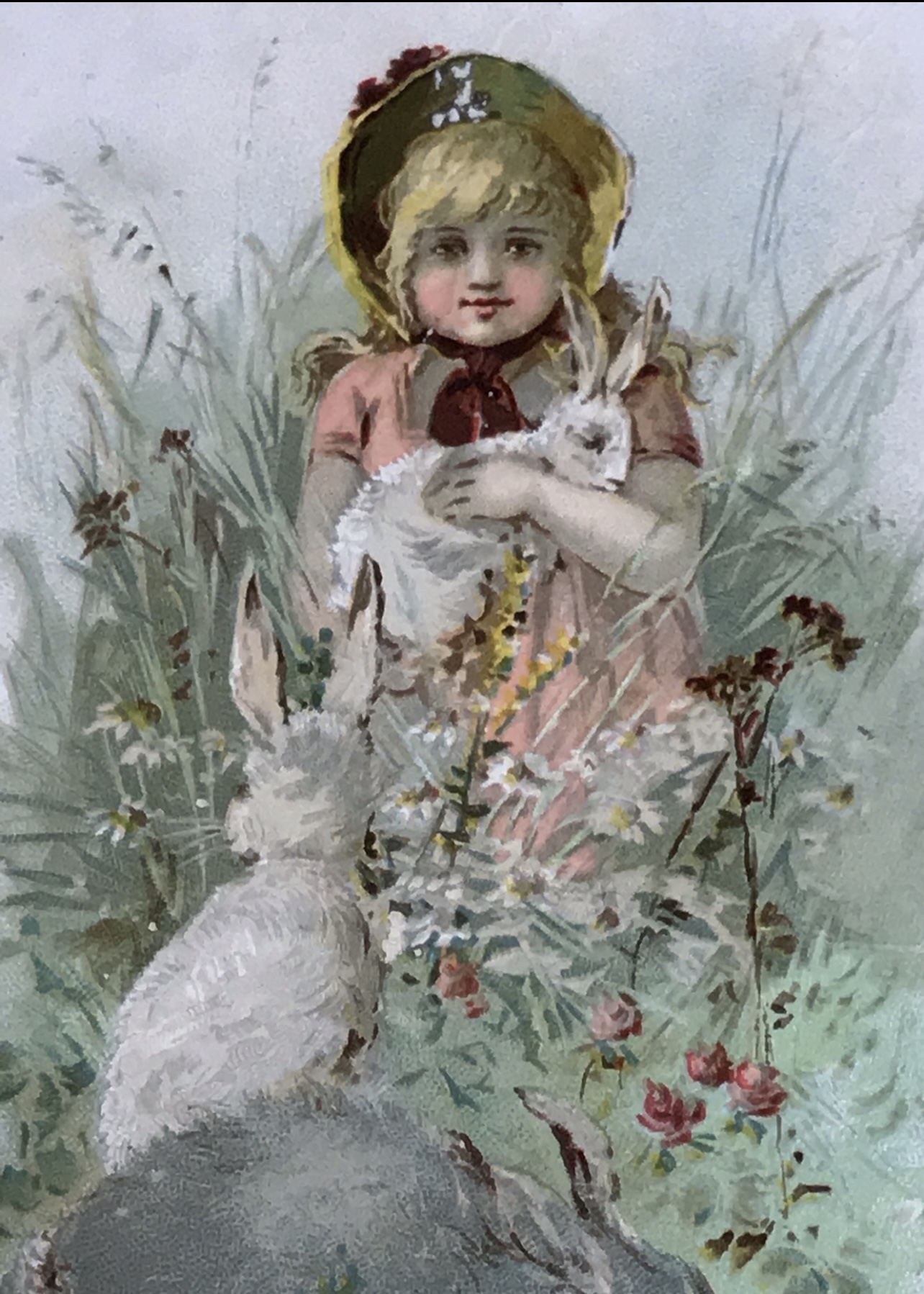

Leave a Reply